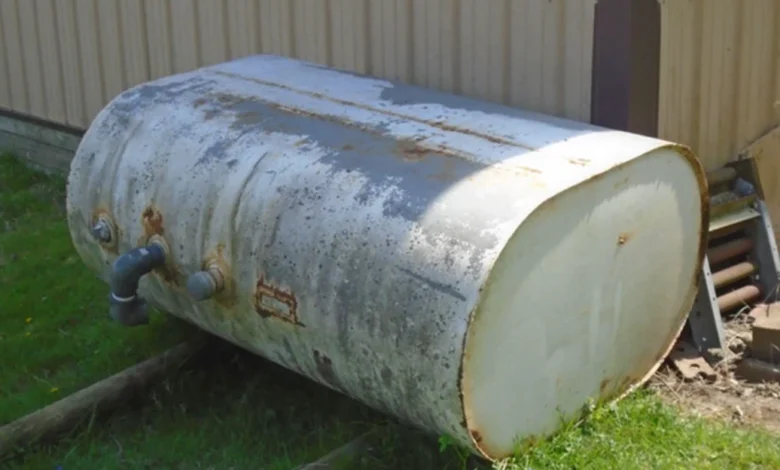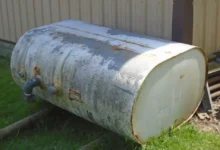Why Oil Tanks Matter More Than You Think

For many homeowners, oil tanks quietly power daily comfort. They heat homes, fuel water systems, and often go unnoticed for years. Yet neglecting these systems can create problems that are costly and hazardous. A tank that begins to fail won’t just impact efficiency—it can also pose environmental and safety risks.
Knowing when it’s time to act can save you from unnecessary stress. That’s why paying attention to the subtle warning signs of trouble is so important. A timely oil tank replacement can prevent damage to your home, your wallet, and even your health.
Rust and Corrosion: The Silent Destroyers
One of the earliest indicators of trouble is corrosion. Oil tanks are exposed to moisture, temperature shifts, and the natural aging process of metals. Rust on the outside may seem cosmetic at first, but it often signals deeper deterioration inside.
Corrosion weakens the structural integrity of your tank. Left unchecked, it can eventually cause leaks. These aren’t just messy—they can be dangerous and costly to clean up. A quick inspection for rust, particularly along the tank’s bottom and seams, can reveal whether your tank is nearing the end of its lifespan.
Damp Spots and Leaks Around the Tank
Another sign that homeowners should never ignore is the presence of damp areas around the tank or oil lines. Even small leaks can cause big problems if they go unnoticed. Besides wasting fuel, leaks can contaminate soil and groundwater.
Spotting oily residue, dampness, or unusual smells around your tank should raise immediate concern. Acting quickly prevents further damage and reduces the risk of costly cleanup efforts.
Age Matters: The Tank’s Lifespan
Just like any appliance in your home, oil tanks have a lifespan. Most tanks last between 15 to 25 years depending on material, maintenance, and environmental conditions. If your tank falls within this age range, it’s time to start planning for replacement.
Even if it appears functional, age increases the risk of hidden deterioration. An older tank is far more likely to fail suddenly, catching homeowners off guard. By addressing age proactively, you avoid being left without heat during a critical time.
Strange Noises and Performance Issues
Changes in performance often signal a deeper problem. Gurgling sounds, unusual vibrations, or sluggish heating systems may all point back to a failing tank. Sludge buildup at the bottom of older tanks can clog filters and lines, leading to inefficiency.
If you notice your system struggling more than usual or producing inconsistent heat, the tank itself could be the culprit. Ignoring these small disruptions often leads to bigger—and more expensive—issues down the line.
Visible Damage to the Tank’s Structure
Sometimes the warning signs are in plain sight. Bulges, dents, or warping on the tank’s exterior indicate structural weakness. These flaws may result from internal pressure changes or environmental damage.
A tank that looks unstable or compromised should be replaced before it fails entirely. The peace of mind that comes with a new, secure installation is worth far more than the risk of waiting.
Unexplained Fuel Usage
If your heating costs seem unusually high or you’re burning through fuel faster than expected, the issue could be with your tank. Small leaks, inefficiencies caused by sludge, or failing parts may force your system to consume more fuel than normal.
Tracking your fuel usage can help you notice these trends early. A sudden spike is often a clear red flag.
The Environmental Factor
An overlooked but critical aspect of oil tank failure is the environmental risk. A leaking tank can contaminate soil, groundwater, and even indoor air. Cleanup is not only expensive but also disruptive to daily life.
Being proactive about replacement ensures that your home remains safe for both your family and the environment. Responsible upkeep prevents damage that may affect not just your property, but your wider community as well.
Professional Inspections: The Best Defense
While homeowners can spot obvious warning signs, nothing replaces the value of a professional inspection. Experts use tools like ultrasonic testing to measure tank thickness and identify internal weaknesses invisible to the eye.
Annual inspections catch problems early, giving you time to plan for a replacement instead of dealing with an emergency. They also provide reassurance that your tank is operating safely.
Planning for Replacement Before It’s Urgent
The smartest approach is to treat oil tank replacement as a planned improvement rather than a last-minute crisis. By spotting early warning signs, homeowners can schedule replacements at convenient times rather than rushing when something fails.
A replacement not only resolves immediate risks but also improves efficiency, lowers long-term costs, and enhances safety. It’s an investment in the reliability of your home’s heating system.
Key Takeaways for Homeowners
Oil tanks may not be the most visible part of your home, but they are essential to your comfort and safety. Recognizing early signs of trouble helps you stay ahead of costly repairs and environmental hazards.
Look out for:
- Rust, corrosion, or visible damage.
- Leaks, dampness, or oily smells.
- Tanks older than 15–25 years.
- Unexplained increases in fuel usage.
- Strange noises or inconsistent performance.
By acting early, you ensure your home stays warm, safe, and efficient. And when the time comes, a timely oil tank replacement is the best way to protect your investment and your peace of mind.





